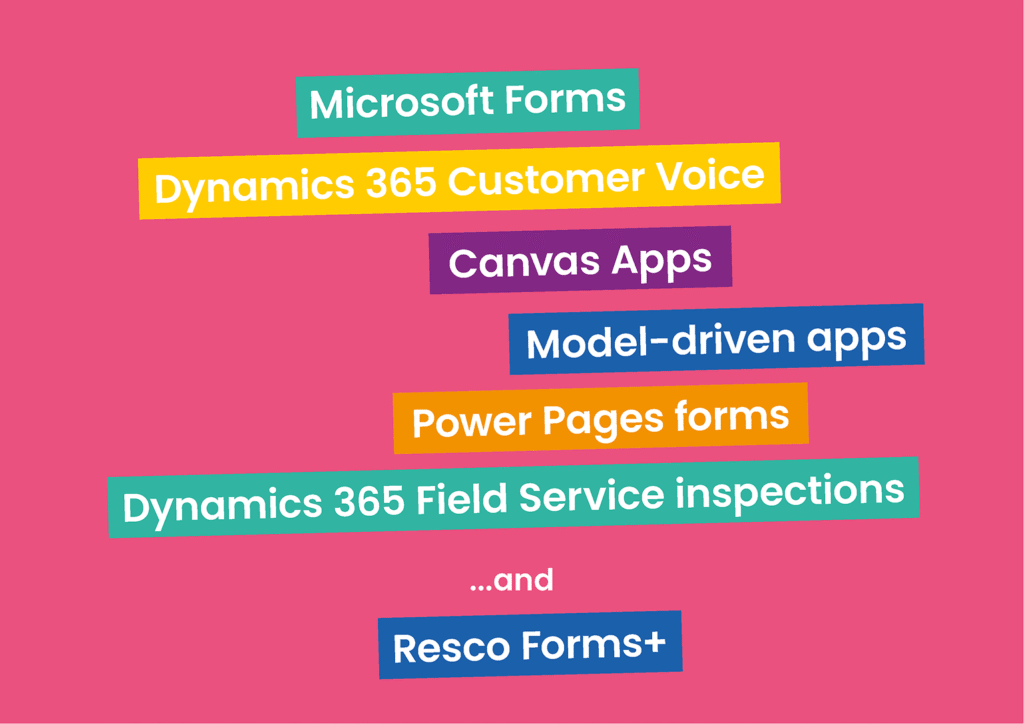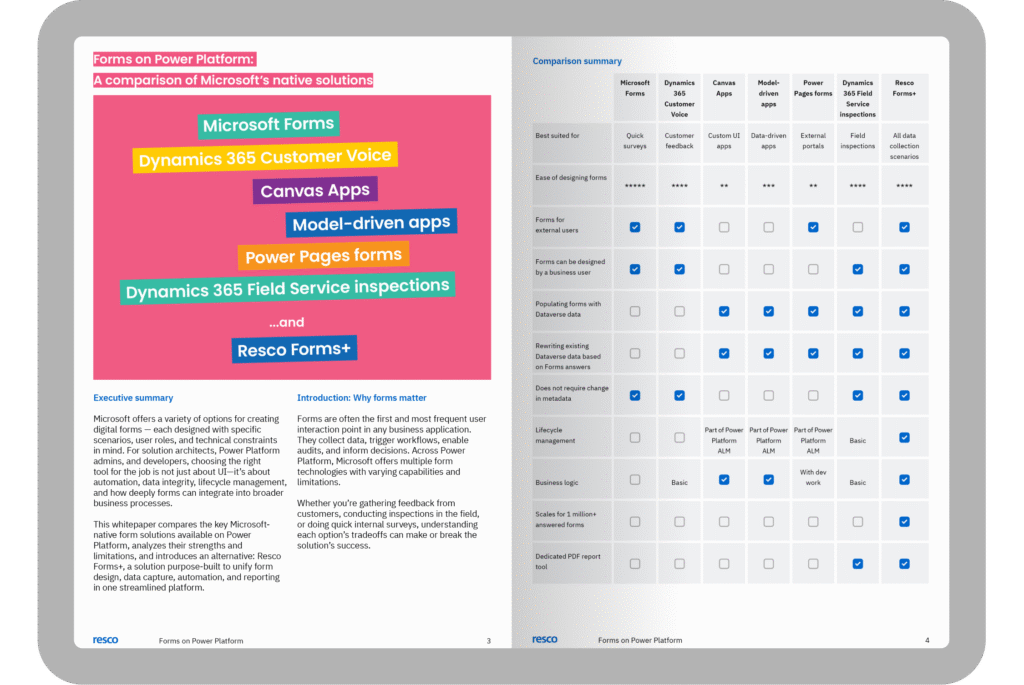If you’re building on Microsoft Power Platform, you’ve probably come across multiple ways to handle forms: from simple Microsoft Forms, to model-driven and canvas apps, Power Pages forms, Dynamics 365 Customer Voice, and Field Service inspections. And while it’s great to have options, picking the right one isn’t always straightforward.
To help with that, we put together a whitepaper that walks you through the most important considerations when evaluating form options in Power Platform.

Here are five key takeaways from the guide:
1. Flexibility vs. standardization
Do you need pixel-perfect design freedom or a consistent experience tied to your data model? Some tools give you full control over the layout and logic, while others follow a stricter framework. The trade-off: flexibility often means more work and less reusability.
2. Effort required to build and maintain
Some solutions are plug-and-play. Others might need custom code or advanced configuration. Consider who will build and maintain the forms: pro devs, low-code makers, or a mix? It’s important to decide what kind of support and governance you’ll need.
3. Internal vs. external audiences
Think about who’ll be filling out your forms. Employees logging data or updating records? Or customers submitting requests via a portal? Not every form tool handles access, authentication, and data security the same way.
4. Data complexity and logic requirements
Are your forms collecting simple inputs, or driving complex processes, dependencies, and workflows? Some tools are better suited for conditional logic, nested questions, repeatable groups, or integration with business rules.

5. When to go beyond the built-in options
Out-of-the-box tools cover a lot, but not everything. In cases like structured inspections, advanced layouts, or tailored user experiences, third-party tools (like Resco Forms+) can extend the platform’s capabilities and offer a better experience for specific scenarios.
It includes a comparison table, practical examples, and a summary of key evaluation criteria to help you choose the right form tool for your next Power Platform project.

![Forms on Microsoft Power Platform [5 key takeaways from the latest whitepaper]](https://www.resco.net/app/uploads/forms-on-power-platform-hero-blog-752x395.jpg)


![Document generation in Microsoft Power Platform [5 key takeaways from the latest whitepaper]](https://www.resco.net/app/uploads/Mockup-ebook-inside-416x243.png)
![Build end-to-end mobile business solutions faster with Power Platform and Resco [short summary from a masterclass webinar]](https://www.resco.net/app/uploads/power-platform-masterclass-blog-416x243.jpg)







